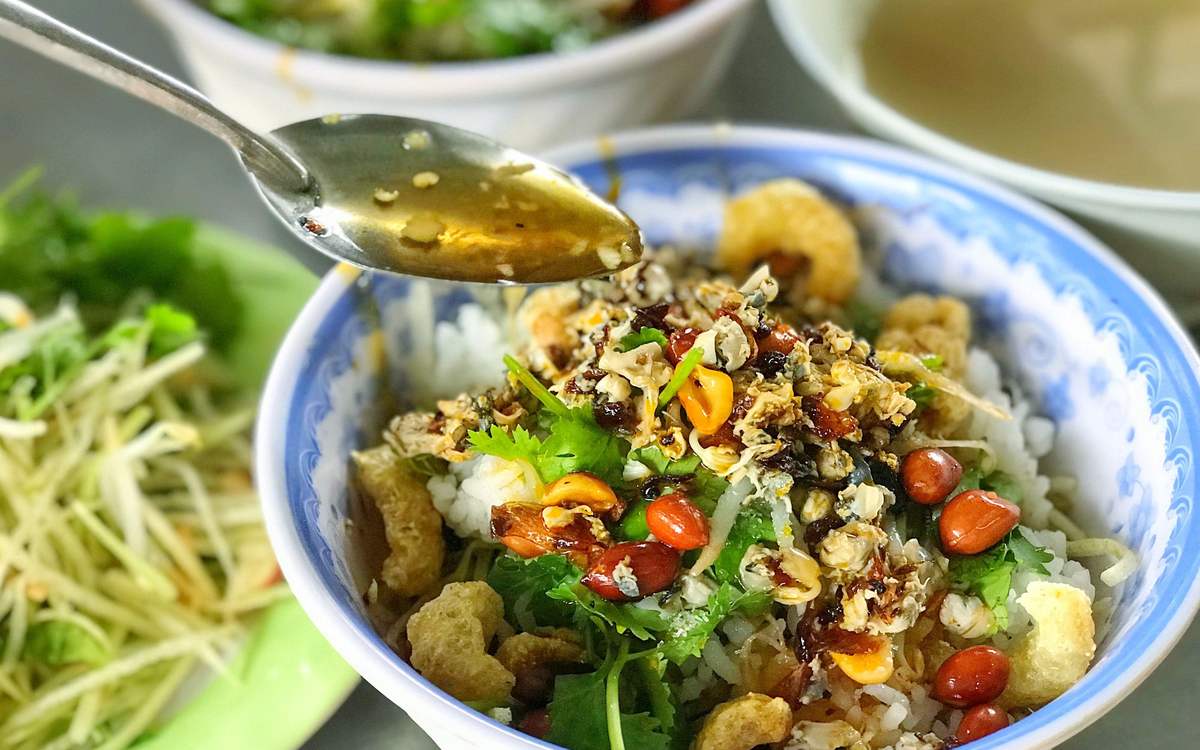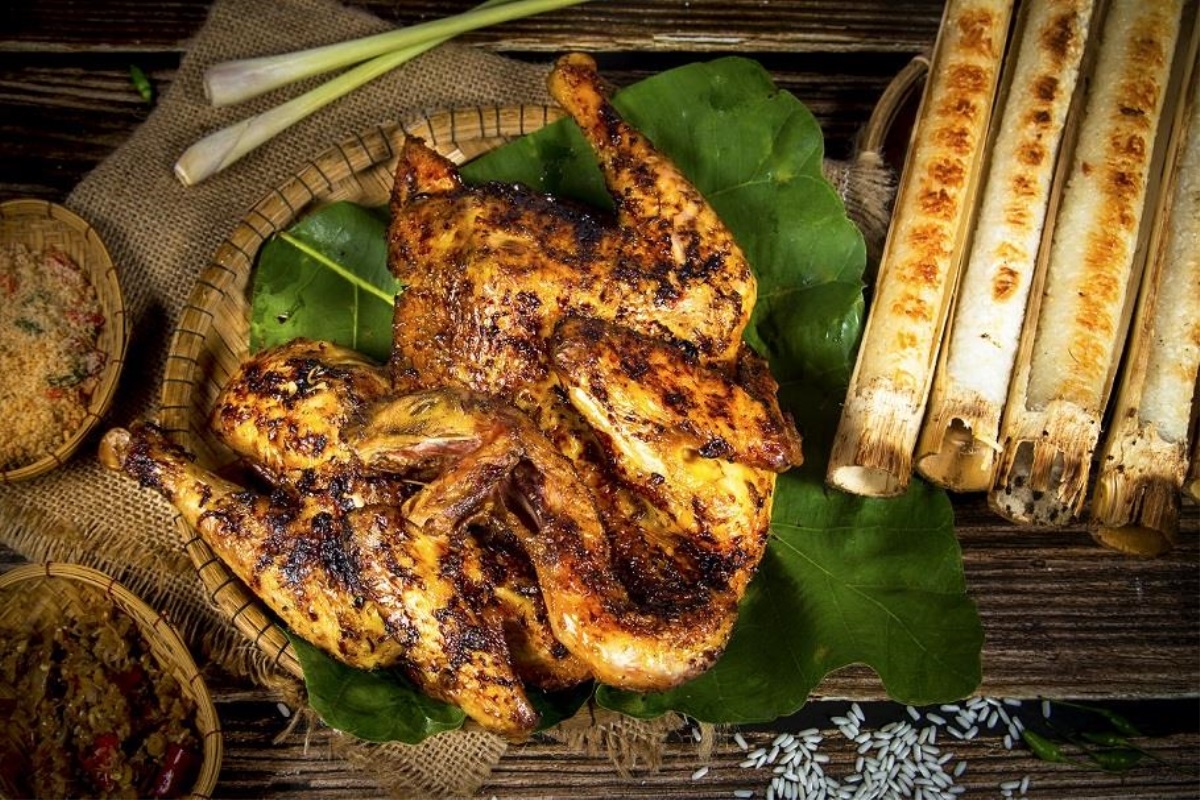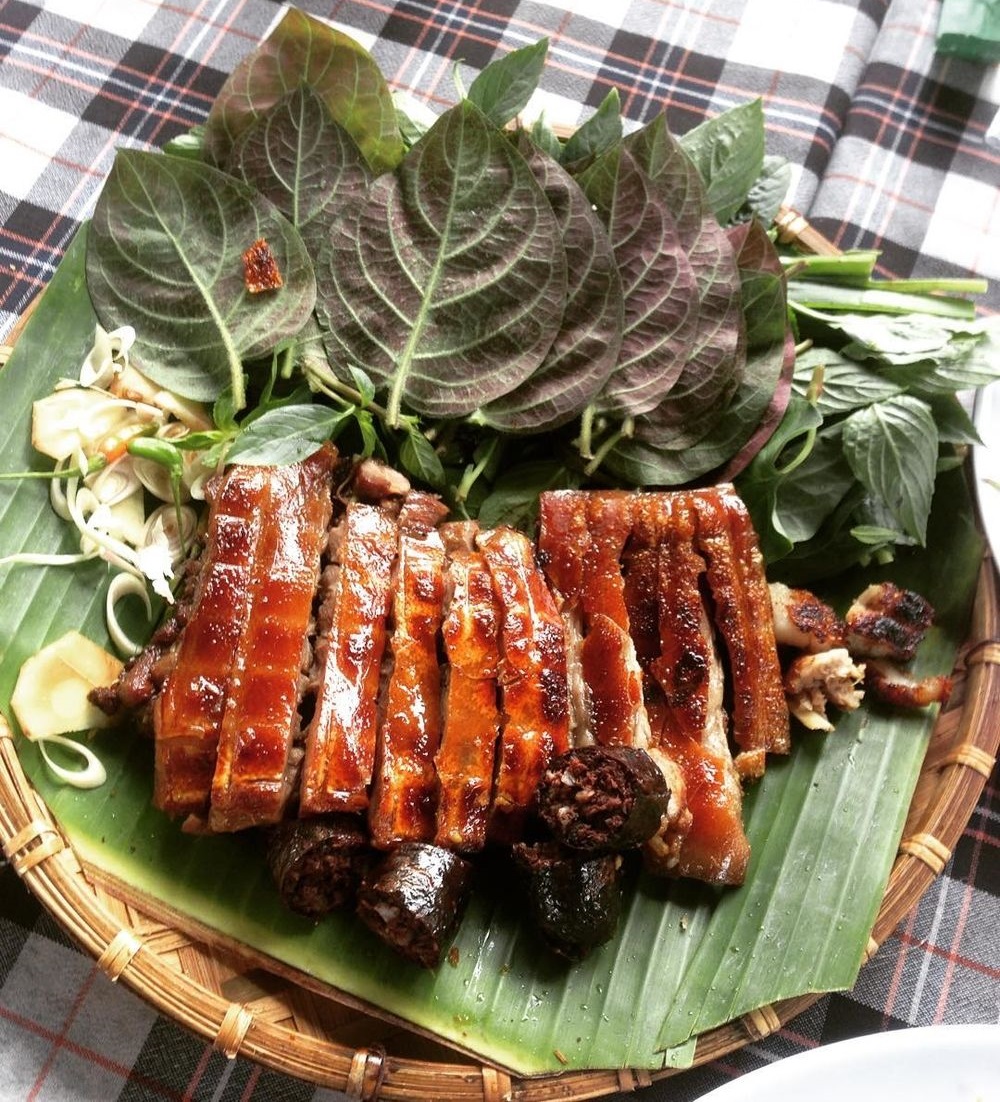Embark on a tantalizing culinary journey through Central Vietnamese food. Uncover the tantalizing blend of flavors, age-old recipes, and cultural influences that make this cuisine a hidden gem.
Bursting with aromatic herbs, bold spices, and fresh ingredients, Central Vietnamese food is a culinary adventure that delights the senses. From the iconic bun bo (Hue noodle soup) to the irresistible nem nuong (grilled pork sausage), every dish tells a story of tradition and cultural heritage. Let’s explore central Vietnam through this vibrant cuisine and find out what makes it so special!
1. Central Vietnamese food: 11 iconic foods in North Central Coast
The North Central Coast spans across the provinces of Thanh Hoa, Nghe An, Ha Tinh, Quang Binh, Quang Tri, and Thua Thien Hue. This region is home to several fascinating destinations, such as Cua Lo Beach and Hue Imperial City.
Aside from sightseeing, tourists also have the chance to sample some of the best Central Vietnamese food here. North Central cuisine is defined by the prominent use of fresh herbs and vegetables, adding vibrant colors and refreshing textures to each dish. In case you don’t know where to begin, here are the must-tries:

- Nem chua Thanh Hoa: A delectable specialty from the Thanh Hoa province that will awaken your taste buds with its distinctive flavors. It is a type of fermented pork sausage made from minced pork, garlic, chili, and various spices, offering a perfect balance of tanginess, spiciness, and umami.
- Banh canh ca loc Quang Tri: The dish combines the richness of thick and chewy rice noodles with the flavorful essence of ca loc, a type of snakehead fish. It is completed with an aromatic broth made from simmering fish bones and various spices, creating a harmonious blend of textures and flavors.
- Banh muot Dien Chau (Nghe An): Often enjoyed as a light and healthy snack or appetizer, this local specialty features delicate rice crepes skillfully prepared using a traditional steaming technique. The rice paper is then filled with flavorful ingredients, including grilled meat, wood ear mushrooms, bean sprouts, and fragrant herbs. Altogether, they offer a savory and refreshing taste profile.
- Banh cuon Thanh Hoa: Similar to banh muot, this culinary delight consists of thin, delicate rice crepes filled with a mixture of minced pork, wood ear mushrooms, and shallots. They are then skillfully rolled into soft and enticing packages and served with fish sauce.
- Chao canh Quang Binh: This hearty rice porridge is prepared by slow-cooking rice with succulent pork, shrimp, and earthy mushrooms in a flavorful broth infused with aromatic herbs and spices. The result is a delectable bowl of Chao Canh, rich in flavors and complemented by the freshness of local ingredients.

- Com hen Hue: Hailing from the imperial city of Hue, this unique specialty revolves around small clams, or “hen”. The clams are served atop a bed of fragrant rice and accompanied by an array of vibrant toppings, including crispy pork rinds, aromatic herbs, shredded green mango, and crushed peanuts. The dish not only offers a burst of flavors but also a cultural experience, representing the culinary ingenuity and royal influences that have shaped the region’s cuisine throughout history.
- Bun bo Hue: This beef noodle soup is another notable specialty in central Vietnam. Thanks to the flavorful broth made with lemongrass, shrimp paste, and chili, this beloved dish has a robust and spicy flavor.
- Banh canh Nam Pho (Hue): The specialty of Nam Pho village, only 7 kilometers away from Hue’s city center. The noodles used in banh canh are made from rice and tapioca flour, resulting in their satisfying chewy texture. They are served with succulent shrimp, crab cake, and fresh herbs.

- Banh beo (Hue): These small, round, and delicate rice cakes are a staple of Hue’s cuisine. They are popular as both a savory snack and an appetizer. The name “Banh Beo” translates to “water fern cake,” referencing the dish’s resemblance to tiny water fern leaves.
- Banh khoai (Hue): Banh Khoai features a crispy outer layer made from a mixture of rice flour, turmeric, and water, creating its distinctive golden crust. The batter is then filled with a delicious combination of fresh ingredients, including shrimp, pork, and bean sprouts, which add texture and flavor to the dish. This central Vietnamese food is traditionally folded in half, resembling a half-moon shape, and served with fresh herbs, such as lettuce, mint, and perilla leaves.
- Banh bot loc (Hue): To prepare banh bot loc, a mixture of tapioca flour and rice flour is kneaded into a smooth dough. The dough is then stuffed with minced shrimp and pork and steamed until it becomes translucent and slightly chewy. The delightful texture and layers of flavors of these savory cakes make them a must-try on your Vietnam food tour.
2. Central Vietnamese food: Top 8 quintessential dishes of South Central Coast cuisine
The South Central Coast is composed of eight provinces: Da Nang, Quang Nam, Quang Ngai, Binh Dinh, Phu Yen, Khanh Hoa, Ninh Thuan, and Binh Thuan.
This region is blessed with an extensive coastline that provides an abundance of fresh seafood, and you can see it in the cuisine. Dishes like goi ca Nam O and goi ca mai reflect the strong coastal influence. The region is also famous for its unique noodle varieties, such as Cao Lau and Mi Quang.
Some notable dishes include:

- Goi ca Nam O (Da Nang): This is essentially a salad made with fresh, high-quality anchovies caught off the nearby Nam O fishing village. The raw anchovies are sliced and marinated in a blend of fish sauce, lime juice, chili, and other aromatic ingredients. The marinade infuses the fish with a tantalizing mix of sweet, sour, salty, and spicy flavors.
- Mi Quang (Quang Nam): An essential central Vietnamese food consisting of white noodles, fresh vegetables, and well-roasted peanuts. What truly sets the dish apart, though, is the turmeric-infused broth poured over the noodle and ingredient combination.

- Com ga Tam Ky (Quang Nam): The dish centers around tender and succulent poached chicken meticulously cooked to perfection. The cook then shreds the chicken into fine strands and serves it with fragrant jasmine rice.
- Banh canh he (Phu Yen): What makes banh canh he different from other banh canh varieties is the addition of he (lily stems), a unique ingredient native to Phu Yen. These tender and slightly crunchy stems add a delightful texture and a mild vegetal flavor to the dish, complementing the seafood-infused broth.
- Goi ca mai (Ninh Thuan): A refreshing salad made with fresh Mai fish, mixed with various herbs and vegetables, and drizzled with a tangy dressing. When you are on a food tour in central Vietnam, remember to add this local specialty to your bucket list.

- Nem nuong Nha Trang (Khanh Hoa): Nem Nuong refers to grilled pork sausage – the star ingredient of this dish. The sausage is prepared by mixing ground pork with aromatic herbs, spices, and seasonings. The mixture is then shaped into small cylindrical pieces before being grilled over charcoal, infusing it with a smoky and savory flavor.
- Banh trang cuon thit heo (Da Nang): The dish resembles spring rolls, commonly known as “goi cuon”, but with an interesting twist. Instead of using traditional rice paper, this version features banh trang, a type of rice paper that is lighter and thinner. To enjoy the dish, you will arrange a filling of pork (thit heo) and some fresh herbs neatly on the banh trang and carefully wrap it into a cylinder shape. If you love light and healthy cuisine, this will definitely be your favorite central Vietnamese food.
- Cao lau (Quang Nam): Although the origin of this dish is still a mystery, Cao Lau is a staple in central Vietnamese cuisine. It features rice noodles, grilled pork slices, bean sprouts, pork cracklings, and herbs. The water used for the broth must be drawn from Ba Le well, so it is impossible to replicate the taste outside of the town.
3. Central Vietnamese food: 7 must-try culinary specialties in Vietnam Central Highlands
The Central Highlands (Tay Nguyen) region consists of Kon Tum, Gia Lai, Dak Lak, Dak Nong, and Lam Dong provinces.
Most travelers will overlook the region, but it is a treasure trove for foodies. From succulent grilled chicken to aromatic noodle dishes and hearty rice delicacies, the Central Highlands cuisine promises a delightful adventure for food enthusiasts wanting to explore the lesser-explored tastes of Vietnam.
Here are the best dishes this exotic area has to offer:

- Ga nuong Ban Don: This simple Vietnamese food showcases tender and succulent grilled chicken marinated with a flavorful blend of herbs and spices. The chicken is carefully cooked to perfection, resulting in a smoky and juicy dish that is sure to satisfy any palate.
- Goi la: The wholesome dish features young la leaves, a local herb with a unique taste, combined with grilled meat or fish. The salad is then dressed with a zesty and tangy sauce, creating a harmonious blend of textures and flavors. Goi la is not only a delicious appetizer but also a celebration of the region’s rich agricultural heritage.

- Com lam: Representing the essence of Central Highlands cuisine, com lam features glutinous rice cooked inside bamboo tubes. This method of cooking imparts a luscious aroma to the rice and gives it a chewy, slightly sticky texture.
- Pho kho (Gia Lai): Pho Kho from Gia Lai is a unique variation of the iconic Vietnamese noodle soup. Unlike the traditional Pho, this dish features dry noodles topped with tender beef, resulting in a rich and flavorsome combination.
- Bun do (Dak Lak): Bun do (red noodle soup) can be found everywhere in Dak Lak. The noodles used in the dish are made from annatto seeds. This special ingredient gives them a red shade, hence the name. Meatballs made of minced pork, crab flesh, onion, and black pepper highlight the soup’s savory taste while enhancing its overall visual appeal.

- Heo ray nuong: The star of this specialty is tender and smoky roasted wild boar. The wild boar is carefully prepared and seasoned, creating a flavorsome and hearty meat dish that will leave a lasting impression on anyone who tries it.
- Mang nuong xao vech bo: If you have never tasted bamboo shoots, this central Vietnamese dish will surprise you. Tender and nutrient-rich bamboo shoots go so well with savory beef, while the stir-frying technique preserves the natural flavors and textures of the ingredients.
